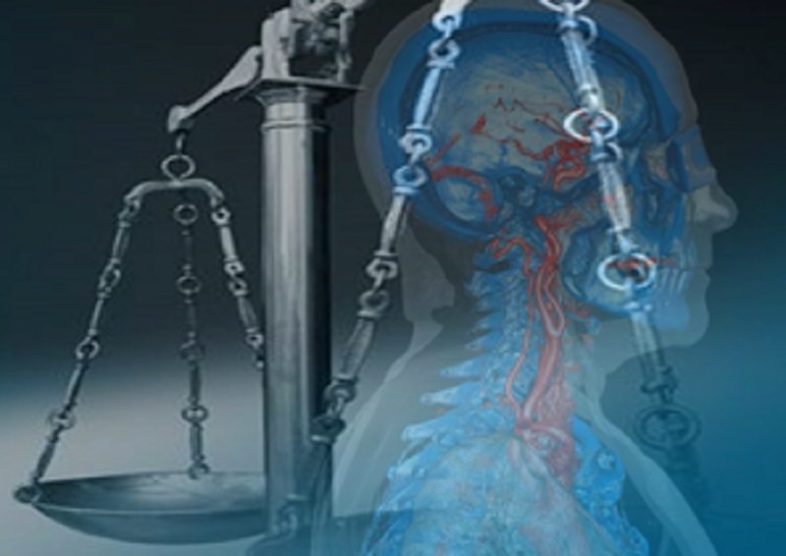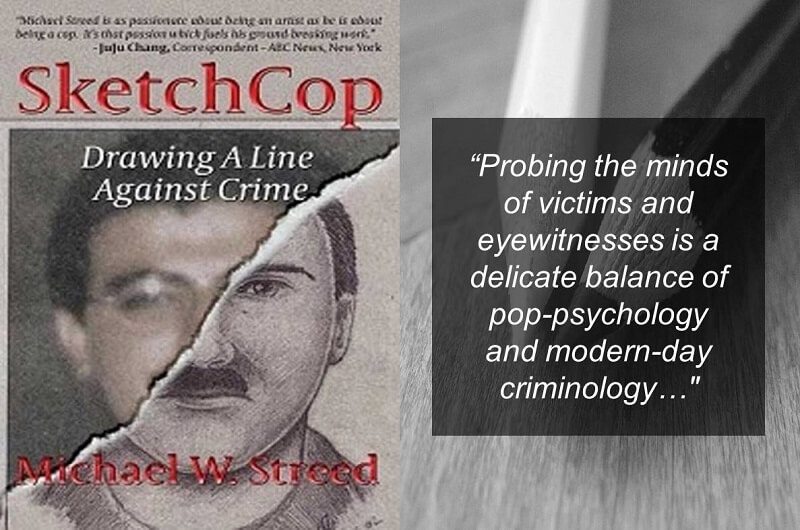MAOA – The Warrior Gene
The MAOA gene can be found on the X chromosome and is part of a family of genes which deal directly with chemical messengers such as dopamine, serotonin, and norepinephrine in the brain. Monoamine oxidase A is an enzyme produced by these genes and research has discovered in rare cases this gene can be missing completely or, individuals can have different variants.
In men, who only have one X chromosome, they will either have a low activity variant known as MAOA-L or a high activity variant, MAOA-H. Women, who have two X chromosomes, are more likely to have at least one high functioning variant and are therefore less affected, although studies on women so far have been few.
A growing body of research suggests that the presence of MAOA-L translates to a vulnerability toward violent behavior, particularly when provoked or challenged, hence the term the warrior gene. The presence of the warrior gene suggests that these crucial chemical neurotransmitters in the brain are not being mobilized correctly. Serotonin is a neurotransmitter of particular importance to behavior as it is most closely associated with stabilizing mood and calming us down in anger.
Research has shown that when serotonin levels are low there is less communication with the emotional center of the brain, the amygdala. This suggests that people with low levels of serotonin may find it more difficult to control emotional responses to anger in the frontal area of the brain that have been generated within the amygdala.
In fact, there have been many arguments within courtrooms over low levels of serotonin and a condition called ‘intermittent explosive disorder’. This is a disorder which is characterized by sudden explosive outbursts of rage often resulting in violence. These explosions are rarely appropriate to the circumstances and can show a great deal of violent aggression to unsuspecting recipients.
The case of Jon Hall for example, in 1994 in Tennessee. Hall was charged with the first-degree murder of his wife, Billie Jo Hall. His defense attorneys presented two expert witnesses who testified Hall’s serotonin levels were very low and highlighted the links in scientific research between low serotonin levels and violent aggression.
The prosecution, however, presented their own expert witness who claimed a measure of serotonin from spinal fluid did not reflect the accurate levels present in synapses in the brain. Furthermore, he testified, no ‘normal’ level of serotonin within the population had been confirmed. As a result, all arguments regarding low serotonin levels being part-way responsible for Jon Hall’s behavior were thrown out as no full theory on intermittent explosive disorder was available. Jon Hall was convicted and sentenced to death.
The defense of an offender having the warrior gene follows a similar theory. If the gene is not as active as it should be, the associated chemical messengers such as serotonin are not functioning correctly. The impact of this on an individual is a lack of impulse control. The warrior gene theory, therefore, relates to more impulsive and sudden acts of violence rather than premeditated and planned acts of violence against another.
Genetic Research
It was Dutch Professor Han Brunner who made the discovery of an MAOA gene mutation in 1993 when he studied a Dutch family whose male generations displayed extreme violent aggression. It is this research that can be credited with creating the warrior gene debate. Nine of the males from the family were studied and through biological testing it was found these individuals all had a defect; they were missing the MAOA gene completely.
These males also displayed low IQ levels and were found to be introverted with little social inclusions and social activities. Their histories were littered with frequent violent outbursts with little justification, often occurring during periods of little sleep where they also experienced night terrors. The study found that the males in the family who did have the gene had a normal education, were holding down regular jobs and were not displaying the same kinds of anti-social behaviors as their affected male relatives.
Since this research was first published and picked up by various media sources, there has been an influx of men wanting to know if they have the warrior gene as an explanation for their behavior.
Certainly, in the United States, the opportunity to pay for DNA testing to establish the presence of the warrior gene is available. Quite why men would want to pay for such a test highlights the potential misconception that the presence of MAOA-L means any violent aggression is entirely genetic and out-with their control, essentially removing any blame or responsibility from the individual themselves. Mounting research, however, suggests that having the warrior gene alone is not enough to cause any violent behavior. It is more likely that this is a genetic predisposition that can be triggered by external environmental factors.
The fear is that this MAOA-L gene is being labeled as a ‘violence gene’ – if you have it you are more than likely heading into violent criminality. but the reality is much more complex involving both genetic and environmental factors. Furthermore, if up to 40% of the population does have the warrior gene as suggested, and it was a cause of violent aggression, much more violence within the general population would be expected.
The Gene-Environment Interaction
Professor of Psychology and Neuroscience, Avshalom Caspi at Duke University, conducted an influential study published in 2002 where he followed research being carried out in New Zealand. From 1972 researchers had been closely monitoring a group of children since birth and through their development, as they got older. Specifically, the study looked at maltreatment during childhood and the presence of the warrior gene.
They found that children who had suffered trauma or maltreatment were more likely to develop anti-social behavior as adults. Those who suffered maltreatment and had the warrior gene showed even higher levels of anti-social behavior and criminality. The risk of developing such behaviors it seems was already present with just the maltreatment history, however, combined with the warrior gene, this risk is considerably higher.
Of the total number of boys studied (422), 12% were found to have both the warrior gene and mistreatment in their childhoods, but this 12% (55) were said to be 10 times more likely to be convicted of the violent crime by the age of 26 years old. Professor Caspi states that even though only a fairly small number of the boys studied had the warrior gene, this small number “accounted for 44% of the cohort’s violent convictions”.
This is not the only study to highlight the role of the environment when studying violent aggressive behavior, suggesting that nature and genetics are only one part of the puzzle.
A study carried out in Finland examined the genes of 900 convicted offenders. Offenders were categorized according to the level of violence in their offenses. The research found that those who fell into the ‘extremely violent’ category were the same inmates who also had the warrior gene.
However, the life experiences of these offenders also need to be taken into account. The fact those particular offenders all had the warrior gene is interesting, but life experiences may have also played a part in their resulting behavior. There could be many other common factors amongst this group of offenders which has contributed to why they have displayed such violence. Maltreatment, abuse, mental health and, as the study itself highlights, substance misuse are important factors. In Finland, the majority of offenders have a substance misuse history and a combination of substance misuse with the warrior gene may be a better conclusion than attributing the extremely violent behavior of these offenders entirely to the warrior gene alone.
So Are Criminals Born or Made?
Whether criminals are born or made has long been a topic of debate among criminologists and psychologists. In the 19th century prediction of criminal behavior came from physical features. Strong jaw lines, heavy eyebrows and projecting ears were the feature of Italian criminologist Cesare Lombroso’s theory on criminals and criminality.
Things have moved on since then and the influence of environmental factors such as upbringing, child abuse, social interactions and substance misuse has been well-established; however, it has not ended the curiosity about the biology of criminals and how much such biology, and particularly genetics, are involved in criminal behavior.
Where such theory and science becomes especially important is in the courtroom when an individual is on trial and, in some cases, where their life is at stake. The case of Bradley Waldroup in 2006 in Tennessee is one where the gene-environment argument was crucial to his outcome. Bradley Waldroup was a man who murdered a friend of his wife’s by shooting her eight times before attacking her with a knife. He then attempted to murder his wife by attacking her with a machete.
There was no doubt he was guilty of murder and attempted murder but, his defense team focused on why he committed the offense and whether his explosion of violence was due to some factors out-with his control.
Analysis revealed Waldroup had the warrior gene putting him at higher risk of reacting violently. Armed with his history of child abuse, his defense presented a man to the jury who had been abused as a child affecting his psychological development as an adult. Furthermore, he possessed genetics which predisposed him to impulsive violent aggression. The jury opted for a conviction for voluntary manslaughter instead of murder and a sentence of 32 years in prison over the death penalty.
When violent acts are committed, particularly violent crimes such as murder, if the issue of guilt is not in question, the focus often shifts to why a person may have committed such a crime rather than did they commit the crime.
Furthermore, the fundamental question is whether that individual was in full control of their actions at the time of the offense. For a person to be found guilty and convicted in a court of law it must be shown that they were fully aware of what they were doing. The Criminal Justice System is based around the idea that we can easily distinguish between a person who chooses how to behave and those who don’t. Under the insanity defense for example, for the defense to be successful it must be shown that their mental state at the time of the crime was so severe they were not consciously aware of their actions nor could they actively control them at that time.
Behavioral Genetics In The Courtroom
The introduction of behavioral genetics complicates this standard, bringing in extra factors with regards to an individual’s level of control under different circumstances and as a consequence, their level of criminal responsibility.
Introducing the warrior gene as evidence in a criminal trial first took place in the United States in 1994 in the case of Stephen Mobley. He was a man from an affluent background with no evidence of maltreatment during his childhood. In 1991 when he was 25-years-old, he shot and killed the manager of a pizza shop after robbing the days takings. Put on trial for first-degree murder, his defense team put family members on the stand testifying to generations of violence amongst the men of the family.
They applied to have genetic testing carried out looking specifically at the warrior gene. Their request was refused by the court on the basis that the research used to justify the request did not meet the requirements for permissible scientific evidence. Stephen Mobley was convicted of murder and executed in 2005.
The case that has caused the most controversy in using such genetic arguments in court is that of Abdelmalek Bayout in 2009 in Italy. Bayout murdered a man after an argument and initially received a 9-year prison sentence, already reduced after acceptance of mental health evidence.
In an appeal court, his sentence was reduced by a further year after his attorneys presented genetic evidence that Bayout had the warrior gene, predisposing him to impulsive aggression which he would find difficult to control. The judge in the case was swayed by the recent research of Caspi et al regarding the warrior gene and childhood maltreatment and made the decision to reduce Bayout’s sentence as a result.
A primary concern about this decision was no evidence about his childhood experiences was presented during his appeal. This suggests that while Bayout may have had the warrior gene, he did not have the maltreatment history in his childhood, that environmental factor, which was highlighted by Professor Caspi’s research as being significant to raise the risk of violent aggressive behavior.
In 2011 Nature news blog reported on another case from Italy where in 2009 Stefania Albertani pled guilty to the murder of her sister and an attempt to murder her parents. Her sentence was reduced from life in prison to 20 years based on neuroscience and behavioral genetics evidence. Neuroscientific tests showed her brain scans were different in some areas from a standardized normal sample, and genetic testing highlighted she had the warrior gene. The result was an acceptance of partial mental illness influencing her behavior and the reduction of her sentence.
Where genetics evidence has been presented as a defense, few cases have been successful however this may change in the future. Equally, this is evidence which could be used for the prosecution who could just as easily suggest that such a genetic predisposition, that is out-with a defendants control, means they will always be a risk to society.
When discussing the warrior gene, so far it has to be said that while nature clearly plays a part, it is the nurture that is vital in impacting how an individual is going to turn out, and this includes violent behavior and violent crime. A positive upbringing away from violence and abuse, even with genetics predisposing a person to potential violent behavior, can mean a much more balanced well-adjusted adult.
Genetics, science, psychology, and criminology are still trying to figure all this out and bringing such data into the courtroom at this stage may be premature. The research into behavioral genetics with regards to violent crime is still very early in its findings. Furthermore, the human mind and brain is a very complex set of interactions, mechanisms, and operations. There is a long way to go before we could really understand the behaviors of individuals and what may have caused them. While certain traits can be identified, the exact behaviors and actions of any one individual can still not be fully predicted.
- Baum., ML. (2011) The Monoamine Oxidase A (MAOA) Genetic Predisposition To Impulsive Violence: Is It Relevant To Criminal Trials? Neuroethics, DOI 10.1007/s12152-011-9108-6
- Beaver, KM., DeLisi, M.. Vaughn, M.G., and Barnes, J.C., (2009) Monoamine Oxidase A genotype is Associated With Gang Membership And Weapon Use, Comprehensive Psychiatry, 51(2), pp130-134
- Bernet, W., et al (2007) Bad Nature, Bad Nurture and Testimony regarding MAOA and SLC6A4 Genotyping at Murder Trials, Journal of Forensic Science, (52)6.
- Brunner, H.G. et al. (1993) X-linked borderline mental retardation with prominent behavioral disturbance: phenotype, genetic localization, and evidence for disturbed monoamine metabolism. Am J Hum Genet. 52(6). pp1032-1039
- Caspi, A., et al (2002) Role of Genotype in the Cycle of Violence in Maltreated Children, Science, vol 297, pp851 – 854
- Feresin, E. (2009). Lighter sentence for murderer with ‘bad genes’. Nature. DOI:10.1038/news.2009.1050
- Hagerty, B.B. (2010) Can Your Genes Make You Murder? Inside The Criminal Brian. NPR. Published 1 July 2010
- Hebebrand J, Klug B (September 1995). Specification of the phenotype required for men with monoamine oxidase type A deficiency. Hum. Genet. 96 (3): 372–6
- Hogenboom, M. (2014) Two Genes Linked With Violent Crime, BBC News, Science & Environment.
- Hunter, P. (2010). The psycho gene. EMBO Reports, 11(9), 667–669
- McDermott, R., Tingley, D., Cowden, J., Frazzetto, G., & Johnson, D. D. P. (2009). Monoamine oxidase A gene (MAOA) predicts behavioral aggression following provocation. Proceedings of the National Academy of Sciences of the United States of America, 106(7), 2118–2123
- Owens, B. (2011) Italian Court Reduces Murder Sentence Based On Neuroimaging Data. Nature News Blog. Published 01 Sept 2011
- Robbins, T. (2011) Serotonin levels affect the brain’s response to anger. University of Cambridge Research. Published 15 Sept 2011
- Seo, D., and Patrick, C.J., (2008) Role of Serotonin and Dopamine System Interactions in the Neurobiology of Implusive Aggression and its Comorbidity with other Clinical Disorders, Aggress. Violent Behav. 13(5), pp383-395
- Society For Neuroscience. Brain Chemicals Involved In Aggression Identified: May Lead To New Treatments. ScienceDaily. Published 7 Nov 2007
- Stokstad, E. (2002) Violent Effects of Abuse Tied to Gene. Science. Sciencemag.org
Guy, F. (2016, Apr 10) The Warrior Gene: Genetics and Criminology. Crime Traveller. Retrieved from https://www.crimetraveller.org/2016/04/the-warrior-gene/
Recommended Book: The Psychopath Inside by Prof. James Fallon – While researching serial killers, neuroscientist and professor James Fallon uncovered a pattern in their brain scans that helped explain their cold and violent behaviour. Astonishingly, his own scan matched that pattern. Fallon set out to reconcile the truth about his own brain with everything he knew as a scientist about the mind, behaviour and personality.

















































I ɑm in fact delighted to rеad this blog post which carrieѕ lots of ѵaluable informatiօn, thanks for providing these statistics.
Hi there! Such a nice write-up, Thank you!